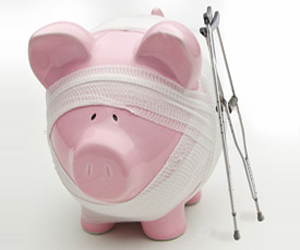Send this article to a friend:
December
02
2022
Send this article to a friend: December |
The Fed Is Not "a Good Idea that Became Corrupt": It Always Was Corrupt
I’m thinking of two well-known financial analysts who are unsurpassed in their analytical brilliance and knowledge of markets and who rightly regard the bureaucratic Federal Open Market Committee (FOMC) as the father of bubbles, busts, stagnation, and market privilege. In their articles, Peter Schiff and David Stockman hammer the Fed relentlessly and rightfully for its cluelessness, corruption, and threat to our material and spiritual well-being. They have authored engaging bestsellers on the state of the economy and place blame where it belongs, on the monetary policies of the Federal Reserve. Yet, strangely, their recommendations stop short of eradicating the cancer altogether. They want the Fed reformed, not abolished. In each case they believe the Fed in its infancy was an institution compatible with free markets. Peter Schiff writes:
He adds,
In The Great Deformation, David Stockman tells us that “the Federal Reserve System, therefore, was intended to be a ‘banker’s bank,’ not an agent of national economic management. This founding charter has been literally blotted out of modern day discussions.” In his closing chapter, Stockman lists various steps he believes will avoid the worst possible catastrophes. He begins with the restoration of the Fed as a banker’s bank and the adoption of sound money, by which he means a gold-backed dollar. Why Was the Fed Created? Before the Fed, the number of nonnational banks was growing steadily, as was their percentage of total bank deposits. By 1896 the number of nonnational banks had grown to 61 percent and their share of deposits to 54 percent; by 1913 those numbers had increased to 71 percent and 57 percent, respectively. Thus, Wall Street power was waning. It was also being diminished by a new trend in which businesses financed growth from profits rather than borrowed funds. Bank interest rates were too high for many ventures. Then there was the long-standing problem with depositors. They would leave their money with a bank, believing it was available on demand, and the banks would turn around and loan it out. If enough customers lined up to withdraw their money, the bank could only close its doors (or get an exemption from government). So, from Wall Street’s perspective, there were the problems of competition from nonnational banks, industry’s preference for thrift over debt, and the public’s irritating tendency to panic and run on banks. To address this situation, four representatives of J.P. Morgan, John D. Rockefeller, and Kuhn, Loeb, along with Senator Nelson Aldrich and assistant secretary of the Treasury A. Piatt Andrew, met secretly at Morgan’s retreat on Jekyll Island, Georgia, in November 1910. The bankers accounted for an estimated one-fourth of the world’s wealth. Led by Paul Warburg of Kuhn, Loeb, they devised a banking cartel that was written into law in late 1913. The money powers—Wall Street—sold the plan to the public as a means of controlling the vast power of Wall Street. How was Wall Street shackled? It wasn’t. By appointing Wall Street bankers to the Federal Reserve Board and to the most important post in the new system, governor of the New York Fed, they increased Wall Street’s influence. The original manifestation of the Fed included these developments:
Banks Violate Their Depositors’ Property Rights As I note in chapter 5 of The Jolly Roger Dollar, the key to the success of free markets is the establishment and defense of property rights. Government law has never recognized the right of depositors to their property, meaning their deposits. Alan Greenspan in his famous 1966 essay writes:
Observe the language: “the banker need keep only a fraction of his total deposits.” How different the impact of that sentence would be if Greenspan had said: “The banker need keep only a portion of his customers’ property, which they entrusted to him for safekeeping”:
A “Banker’s Bank” without Government The desire for a banker’s bank is not misguided as long as it’s disconnected from the government:
Conclusion The Federal Reserve was not a sound institution that became corrupt. It was always a corrupt institution and has only grown more corrupt. Ron Paul has the right approach—End the Fed. Get it out of our lives and restore monetary freedom—the right to choose a medium of exchange.
|
Send this article to a friend:
 |
 |
 |